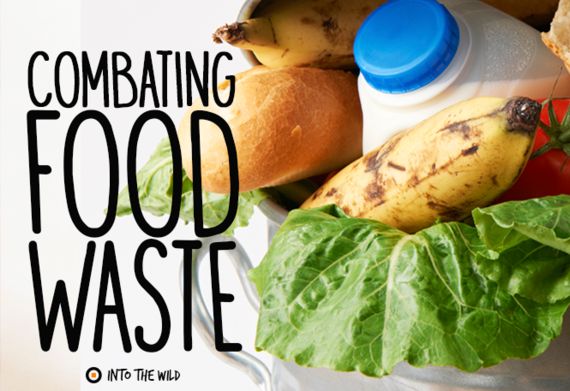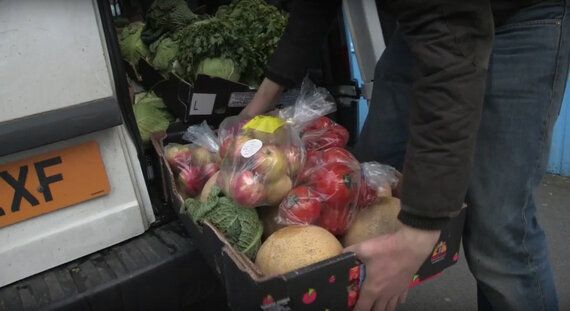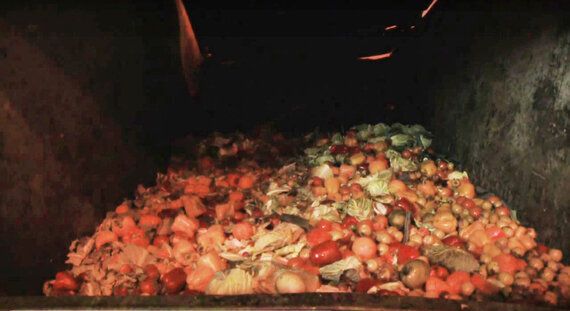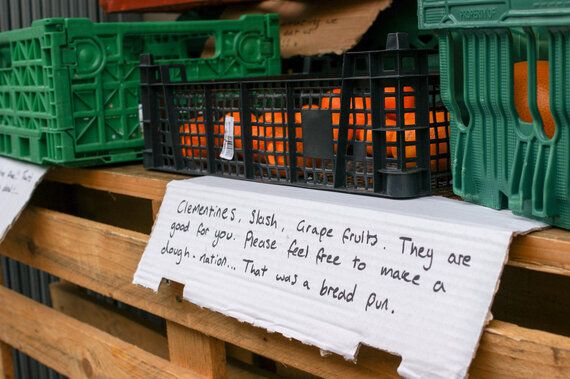
Less hunger in the world, a smaller carbon footprint for each of us, more agricultural space, lower greenhouse gases, less water waste and smaller economic losses - it sounds wonderful, but unattainable. The truth is, it can all be done with one simple change: the amount of food wasted on a daily basis.
Reducing food waste has nothing to do with feeding yourself from bins. It would be unhealthy to eat mouldy food, keep leftovers for weeks, or any other kind of malnutrition.
The waste that can vastly be cut down is not even processed or cooked yet. 15 million tonnes of food are thrown away in the UK each year; that is over 500 pounds a year per person!
There are two parties responsible for food waste: the supermarkets and the consumers. Each are responsible for about half of the waste produced.
Households make up 7 million tonnes, wasting about £60 a month on uneaten food. A third of the food bought ends up in the bin and the problems of surplus food are as follows: they have to be stored correctly or they become less appealing and are thrown out, products with a short shelf life are often forgotten, sell-by dates are confused with use-by dates and entire baskets of food go in the rubbish.

Food manufacturers and retailers make up the other half of the food waste. Anything that is past the display date is thrown out. No, it is not reduced or given away. It usually doesn't even go to a food bank; it simply goes out the window onto the mountain of food already thrown out. That applies to everything: The largest amount of food goes to waste on fresh products such as fruit and vegetables, followed by drinks and bakery products. Surprisingly, meals, dairy and meat make up less than 30 per cent of the food waste. Even cupboard items such as packaged rice, pasta and tins end up in skips.

Some food doesn't even make it to the shops as it sorted out before leaving the producer, not because it isn't deemed fit for human consumption, but because it simply won't be sold. Why? A small bruise, a funny shape, too small, too big... the excuses are endless!
When it makes it to the retailer, the rule is a supermarket has to take all or nothing, which often leads to throwing out whole pallets or baskets because of one sub-standard vegetable such as a small bruise that may have occurred during transportation.
Impact on economy, environment and society
Along with the food, almost £8 billion a year go to waste in the UK. That amount could feed the 13 million living in poverty.
We use land, resources and water to produce all our food. Is it worth it for products that end up in the bin? 75 per cent of deforestation is undertaken to grow food, which is then partly wasted; one third of the world's agricultural area is used for food that doesn't end up on a plate.
The other issue is the resources we use: watering crops when rainfall isn't enough, feeding the animals we eat, cleaning and preparing the food and transporting them from farms to supermarkets, creating more pollution and greenhouse gases. To produce a portion of rice it takes 125 litres, and 650 litres for a chicken breast! That equals running four baths.
The Big Picture - food waste in Europe and what other countries are doing
The UK is one of the worst offenders, but isn't the only country struggling to fight the problem. In France, where each person throws out an average of 45 and 65 pounds of food a year, supermarkets have been banned from destroying unsold food. "It's scandalous to see bleach being poured into supermarket dustbins along with edible foods," said the Socialist deputy Guillaume Garot, a former food minister who proposed the bill. Alternatives are giving the products to food banks and charities, to avoid fines set to be put into action in July 2016.
Companies have come up with smaller portions like the "Little Big Loaf" to cater to those who don't need a full loaf of bread.

The Real Junk Food Project was founded in 2013 and intercepts food from shops and restaurants to sell in cafés where everything is cooked from products otherwise wasted. There is an environmental and a social aspect: It operates on a strict Pay-as-you-feel (PAYF) policy, allowing anyone to be fed and repay it in any way they are able to: donations, time, entertainment... everything is legal tender.

One of their projects is the Bristol Skipchen. Volunteers offer their time to gather and prepare dishes and there is never a set menu. What is served depends on what comes in each day - from banana bread to lobster or a curry.

Consumers can also largely cut down on waste. The solutions are easy: buy less, check how to store items, plan your meals, cook the right amount and prioritise food with a shorter shelf life. Give away food you won't use in time and trust your senses - smell and look at the product instead of reading the display-by date. There are simple tricks to use food that is unappealing but healthy: cook ripe bananas into banana bread, peel wrinkly cucumber to make a salad and a bruised vegetable makes a yummy soup.
To reduce your carbon footprint, think about the foods you eat: Stick to seasonal fruit and vegetables - they will need less watering and artificial heat to grow - and focus on local produce that doesn't require much air travel and cut down on products such as meat that require a lot of water and release a large amount of greenhouse gases in the production process.
By Claire Herbaux - Online Journalism Intern
